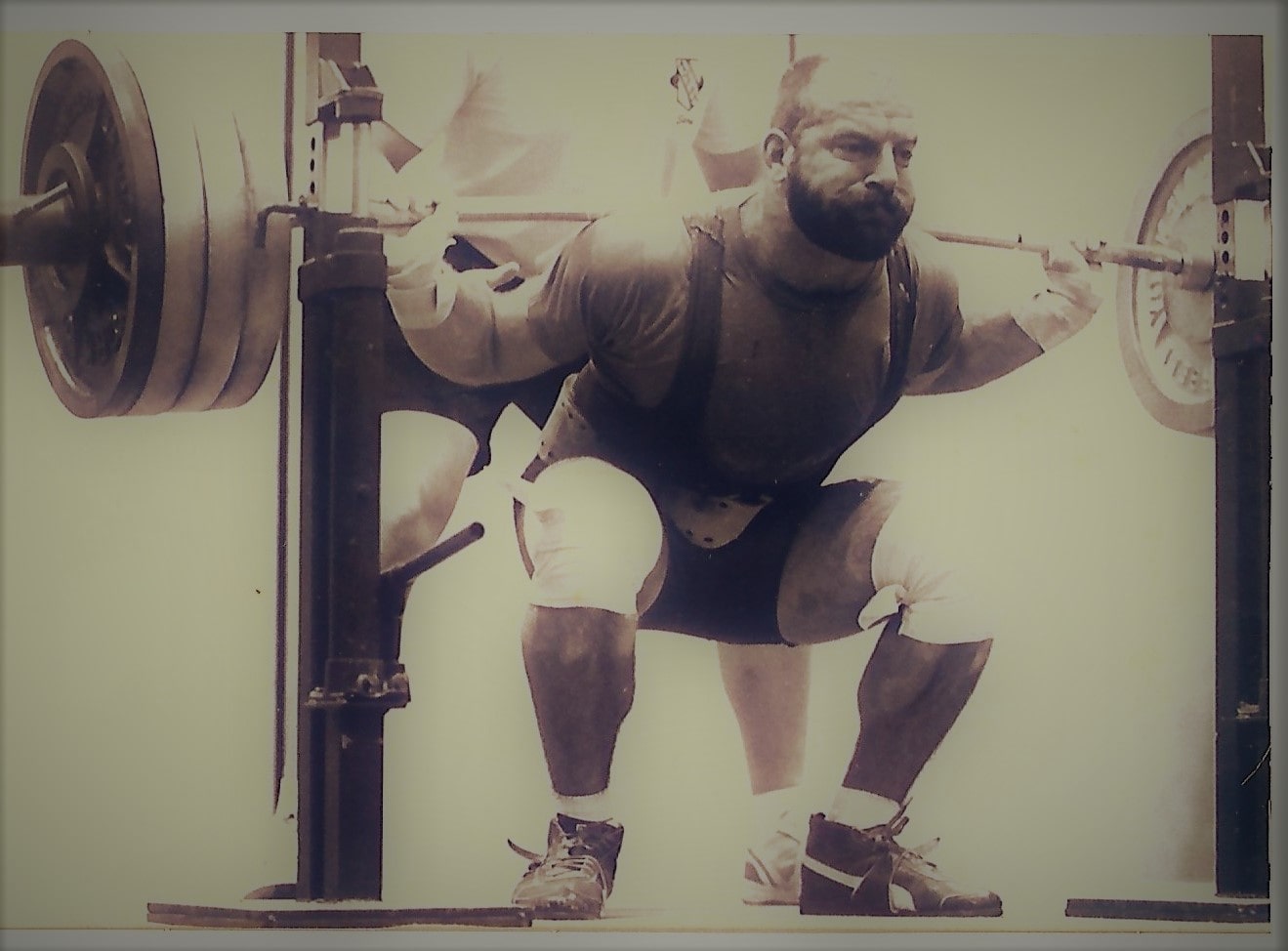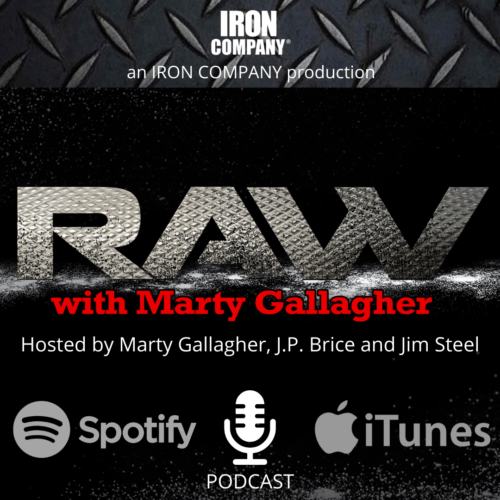
Powerlifting Training and Competition
Interested in competing in Powerlifting? It is a heck of a challenging sport and one that tests your mettle in every training session. The powerlifting competition itself, called a “meet”, consists of maximum lifts in three lifts: The squat, the bench press and the deadlift. There are bodyweight categories for both men and women. Each powerlifter gets three attempts at each lift. The rules state that the lifter can only go up in weight, even if they miss, and most of the other lifts have similar rules in any reputable organization. The squats must be below parallel, the benches paused on the chest and the deadlifts must be totally locked out. There are plenty of powerlifting organizations, some better than others. My advice is to pick one where the rules are strict, it benefits a lifter who trains correctly with good technique.
I began powerlifting on a whim years ago, 1995 to be exact. I had always lifted weights for football, but never in a meet. I had an urge to barbell squat 600 pounds, a number that I had never done before. I ended up squatting that weight in a Gold’s Gym in Florida when I was coaching high school there. At the same time of my 600 pound squat, I was curious what folks were squatting in the powerlifting world. What I found out was shocking to me: My 600 pound squat didn’t even qualify me in the top 200 squats for my 275 pound weight class, in the world! Now, I was really intrigued with this whole Powerlifting sport. I began reading about Kirk Karwoski, Ed Coan, and all of those great powerlifters in the now defunct Powerlifting USA Magazine. I also bought a powerlifting video, Powerlifting Video Magazine, and saw Karwoski squat 800 lbs for 5 reps with just a weight belt. This was just amazing to me. I got back in the gym, determined to put more weight on my squat total. In 6 months, I bumped my bodyweight up to 300 pounds and my squat in the gym to 700 pounds. That was good, but at some point, somebody said to me, “It doesn’t count unless you do it in a meet.” So, I decided I wanted to squat 700 pounds in a meet. I signed up for a “squat only” meet. And was successful with 715 pounds. Before I got started on a new training cycle after that meet, I set some new goals; to squat 800 pounds, bench 500 pounds and deadlift 700 pounds. These goals became firmly entrenched in my brain every time that I trained, pushing me forward.
What was my training like during this time? I trained 3 days a week:
Saturday: Squat
Sunday: Bench, Shoulders, Dumbbell work, Triceps
Wednesday: Deadlift and bent over rows
I have always been a big believer in high volume, and that volume for me was usually in the 80%-85% of my one rep max intensity range, with multiple sets at the beginning of a training cycle, and as the meet gets closer, the sets decrease some. I performed each lift once a week. The following training cycle is one that I used on my way to squat 800. I competed as an equipped lifter, meaning that I used a squat suit, knee wraps and weightlifting belt. There was no “raw” division in the 1990’s, where the lifter just wears knee sleeves and a belt. I had a heavy week one Saturday, and then a lighter training day the following week. The reps on the heavy days increased by one rep a week, and the cycle started at 85% on the heavy days and 80% on the light days. I increased the poundage by 5 pounds on the heavy days in the first 4 weeks (after that, the % jumped up), and increased the weight by 5 pounds a week on the light days. Here is the squat training cycle:
Week 1 595 5x3 (suit and wraps)
Week 2 560 5x2 (wraps)
Week 3 600 5x4
Week 4 565 5x2
Week 5 605 5x5
Week 6 570 5x2
Week 7 610 5x6
Week 8 575 5x2
Week 9 660 3x2
Week 10 580 5x2
Week 11 700 3x2
Week 12 585 5x2
Week 13 740 3x2
The hardest day of that cycle was the 5x6 with 610 pounds. I vomited after the third set and again after the fourth and fifth sets. I think that day set me up for super-compensation because when I went to 660, it flew up. After that 5x6 day, I was sore for a week, but it worked. These were tough, brutal powerlifting workouts, but gave me a solid foundation to hit some big numbers. The bench and deadlift were cycled similarly.
At the conclusion of my 6 years of powerlifting competition, I ended up squatting 820 pounds, bench pressing 505 pounds and deadlifting 740 pounds in a meet. I had reached my goals and was satisfied with my foray into powerlifting.
After spending a few years in the powerlifting world and being around some world champions like Kirk Karwoski, Marty Gallagher, Rob Wagner, and Brad Gillingham, I noticed some similarities in their mindset, similarities that set them apart and made them great. Firstly, they have a single-minded passion for lifting, and nothing is going to stand in their way of reaching their goals. Kirk had numerous quad tears, Marty broke his leg and Rob Wagner tore his adductor off of the bone. All of them came back to win national or world championships. And they all stick to the programming plan. No program hopping for them. They always saw their training cycles through to fruition. But what really stuck out to me after being around those guys is their emphasis on proper technique. Kirk could spend hours just speaking on the setup of the squat, that's even before the squatting motion begins. When Kirk and I teach Special Forces soldiers, I am always amazed by the intricacies that he focuses on in the lifts. Wagner was a technician also, his late-night talks in the office with me on technique made me feel like I didn't know a thing and encouraged me to delve deeper into the technical aspects of the lifts. There are no world champions who are "big dumb meatheads" as the stereotype suggests, all of them are cerebral as they come. And one more attribute that these guys have that sets them apart from mere mortal lifters is the intensity level. When these guys lift, there is a feeling in the air that is just different, a different vibe that something different is happening now, and there is no time for fooling around, that this is important. When I teach with Brad Gillingham, he talks about the conventional deadlift, and I teach the sumo deadlift. When he speaks of the deadlift, he gets so excited and fired up that the hair stands up on his arms.
My background with Powerlifting helped me tremendously when training athletes. Of course, I understood how to peak the athletes for maximum lifts, but also peak them for their games, because of my understanding of recovery through heavy lifting. The techniques that I learned through Powerlifting were something that I taught every single day to my athletes.
And one more thing about Powerlifting: Don't make it complicated. Your focus should be on the three lifts and a little assistance work. The more time that you spend with a barbell in your hand or on your back, the better. And there is no need to spend hour after hour in the gym. Do your work, get out, eat and recover.
About The Author - Jim Steel
Jim Steel has been immersed in athletics and the Iron Game for most of his life. He has been a college football player and coach, powerlifter, Muay Thai fighter and is currently a competitive bodybuilder. In 1999, Steel was named Assistant Strength and Conditioning Coordinator at the University of Pennsylvania, and moved up to Head Strength and Conditioning Coordinator in 2004. He is the owner of the blog Basbarbell and is a motivational speaker, frequent podcast guest and the author of two books, Basbarbell Book of Programs and Steel Reflections. Steel is a Certified Strength and Conditioning Specialist with the National Strength and Conditioning Association. Jim Steel is co-host of the RAW with Marty Gallagher Podcast along with Marty Gallagher and J.P. Brice and is a monthly content contributor at IRON COMPANY.



